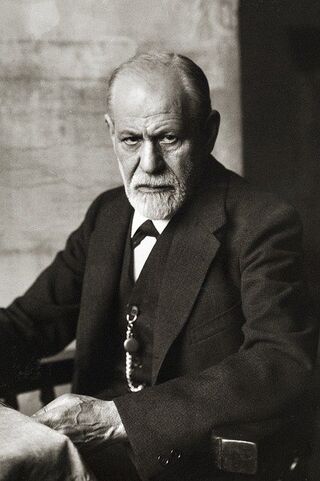Personality
The Link Between Histrionic Personality and Conversion Disorder
Part 2: The case of Nancy.
Posted April 27, 2021 Reviewed by Chloe Williams
Key points
- It is not uncommon for Conversion Disorder to accompany Histrionic Personality Disorder.
- Conversion Disorder is the presence of neurological or physical symptoms with no physiological cause; they are psychologically generated.
- Conversion Disorder occurs when people can't or won't constructively express strong emotions.
- People with Histrionic Personality Disorder are prone to overly-emotional states, which may help explain why Conversion Disorder co-occurs.
In part 1 of this series, readers learned how Nancy's early relational dynamics encouraged her need to be the center of attention and influenced tumultuous emotions. So overwhelming were her emotional experiences that she would become physically ill — in a mysterious way. Given the correlation to all of her stresses of late, Nancy was referred to the University Medical Center Psychiatry Department where she met Dr. H and we learn about a commonly co-occurring condition of Histrionic Personality Disorder.
Putting together the puzzle
Getting to know Nancy, and taking a very detailed history, Dr. H began making sense of the persisting "unexplainable" medical complications.

First, psychological testing and interviews pointed sharply towards Histrionic Personality Disorder, or, what was known in Freudian times as Hysteria. Eventually deemed a sexist term, given the prefix hys implies the uterus and thus suggested inherent feminine flaws, the condition was renamed. Regardless, it is a personality with core features of theatrical, attention-seeking behavior; displays of fleeting emotions that may appear shallow/superficial; and a tendency to perceive relationships as much more intimate than they are. It is easy to see how Nancy's early experience at home spurred her pervasive interpersonal style of adulthood.
Adding to the Hysterical (Histrionic) Personality peculiarities, Freud and his contemporaries frequently noted a collection of puzzling neurological and somatic symptoms with no physiological cause. A neurologist in training, Freud wrestled with the phenomenon and perceived a meeting of the waters of neurology and psychiatry. It is with this interest that Freud's career shifted, and out blossomed understandings of psychosomatic illness that still hold water today.
Dr. H concluded that Nancy's physical symptoms were psychologically generated. Of particular concern were the fainting and deafness, indicative of Conversion Disorder, a condition correlated with Histrionic Personality Disorder (Millon, 2011; APA, 2013; Sari et al., 2016).
What’s converted in Conversion Disorder?
Conversion Disorder seems to happen in people who can't, or won't, express strong emotions, or in people so overcome by emotion they can't possibly express it in conventional ways (Harvard, 2014). As Freud conceptualized, strong emotional energy must somehow be discharged, so it's "converted" to a physical symptom in order to be expressed. Given the neurological system has overlap with the psychological, it makes sense they somehow partner to do this. It is only diagnosed, according to the Diagnostic and Statistical Manual, 5th Edition (DSM-5) when medical and substance-related possibilities have been ruled out. Psychogenic Conversion symptoms include:
- Deficits in one of the senses
- Seizures or syncope (fainting)
- Paralysis or significant weakness
- Parathesias (numbness, lack of sensation, tingling)
- Loss of voluntary muscle control, often in the form of trouble swallowing, tremors, or gait issues
- Speech problems
Another clue to physical symptoms being psychogenic is the odd manifestation of neurological symptoms that may occur. One of the strangest is "glove anesthesia" whereby a patient experiences a lack of sensation of the hand to partway up the forearm, like a glove or gauntlet. Medically, this would never occur. Similarly, there is also "sock anesthesia."

How does Conversion work?
We've come a long way in understanding the brain and mind-body connection. However, thus far no certain brain activity has been identified as the Conversion culprit, though researchers such as Cretton et al. (2019) have made some headway in possible biological roles. It may well hold true that Conversion Disorder is indeed largely a mechanism of the unconscious.
Having evolved a keen understanding of the subconscious, Freud, though he had no computer, realized it's like an operating system. It is always running in the background, taking care of things we need to function that we couldn't possibly understand. Sometimes, glitches arise in the software that make things difficult for the user who is trying to complete tasks.
Since people experiencing Conversion Disorder present no physiological basis for their physical symptoms, keeping with the computer analogy, their experience may be thought of as, "their hardware is sound, but there is a glitch in the software."
For Nancy, her unfinished emotional business became like a sleeper virus, waiting to attack her software and shut her down. Tune in tomorrow for the rest of Nancy's story.
References
American Psychiatric Association. (2013). Diagnostic and statistical manual of mental disorders (5th ed.)
Conversion disorder (March, 2014). Harvard Medical School Newsletter https://www.health.harvard.edu/newsletter_article/Conversion_disorder
Cretton, A., Brown, R., LaFrance, C., & Aybeck, S. (2019). What does neuroscience tell us about the conversion model of functional neurological disorders? The Journal of Neuropsychiatry and Clinical Neurosciences, 32(1). https://doi.org/10.1176/appi.neuropsych.19040089
Millon, T. (2011). Disorders of personality (3rd ed). Wiley.
Perez, D.L., Abayek, S., Nicholson, T.R., Kozlowski, K., Arciniegas, D.B., & LaFrance, W.C. (2020). Functional neurological (conversion) disorder: A core neuropsychiatric disorder. The Journal of Neuropsychiatric and Clinical Neurosciences, 32 (1), 1-3. https://doi.org/10.1176/appi.neuropsych.19090204
Sari, S.A., Fettahaglu, C., Ozatalay, E. & Uzun, A. (2016). Traumatic life history and co-existing psychiatric diagnosis in adolescents diagnosed with conversion disorder. Cumhuriyet Medical Journal, 38 (4), 271-278. http://dx.doi.org/10.7197/cmj.v38i3.5000163351


